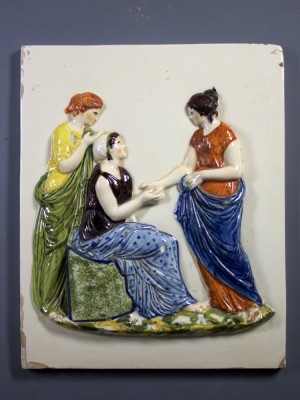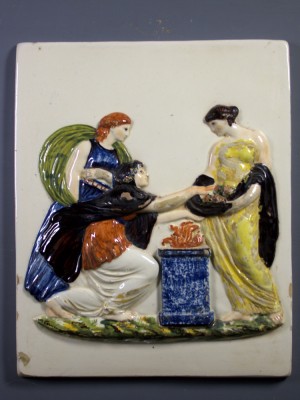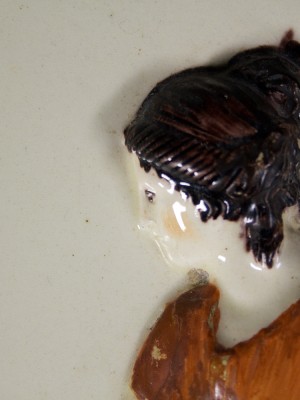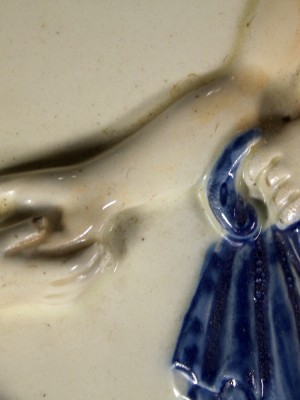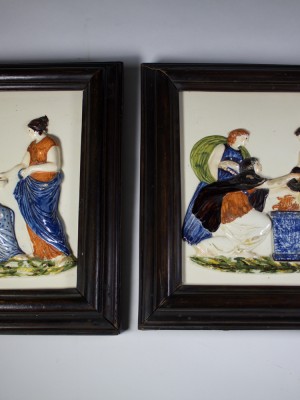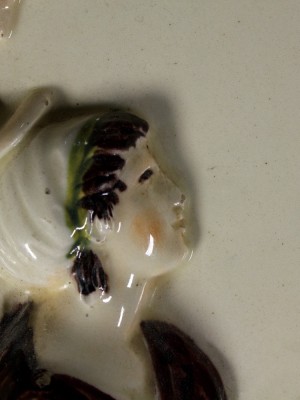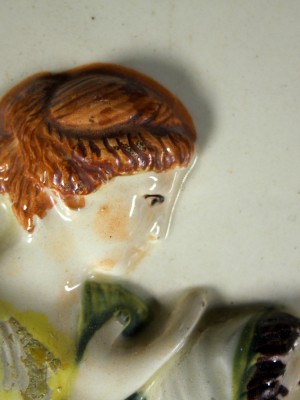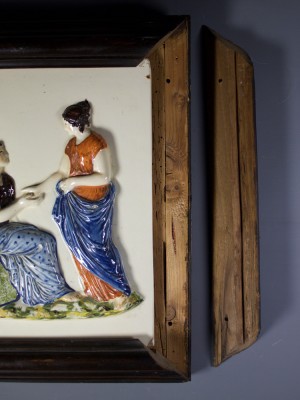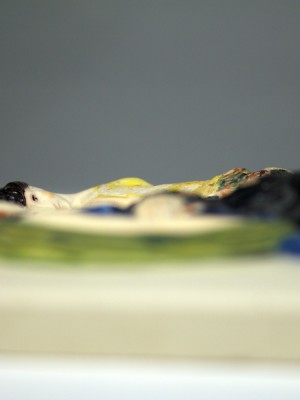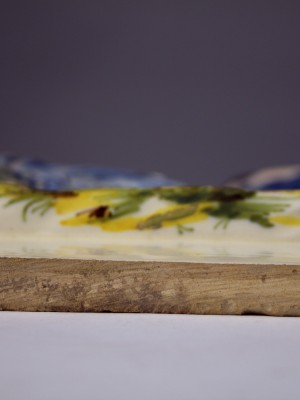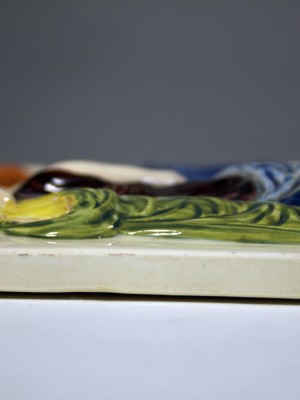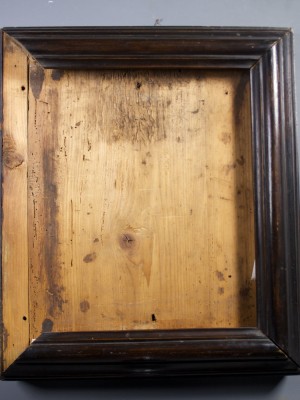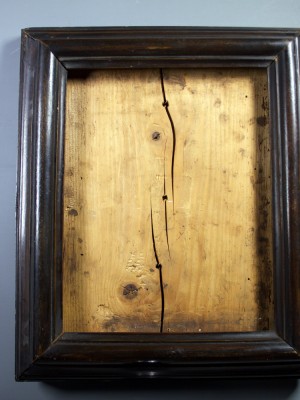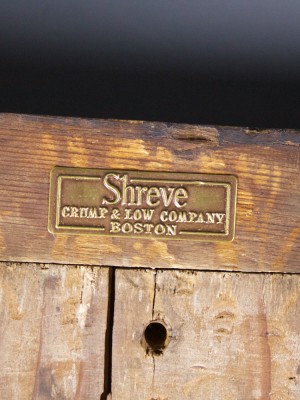I mistakenly ascribed these as Pratt Ware when by evidence of the glaze, they would have been made in continental Europe. The glaze lacks the slight tinge of blue that would be present if they were. I am grateful a knowledgable reader shared that information. I still believe these to be circa 1800. Nothing else has changed. Both are unmarked.
The main body of each plaque is a press moulded slab. The fingerprints of the potter can be seen on the backs. The sprigs were pressed separately and applied to the surface.
The plaques appear to have been fired on end. Probably in some type of tile setter. Balancing these big forms all on their own would have been too risky. There are no spur or stilt marks on the top or bottom glazed surfaces. When you look closely at the dry edge you can see that it has been hand ground post firing.
I am including an image of some porcelain tiles placed in a pair of modern tile setters. Porcelain cannot however be glaze fired this way for reasons that would be better explained in an Instructor post (which I have yet to write). It gives the idea.
In a recent post about my own work, I talked about the potter’s nightmare of glaze shivering. This serious defect can happen when glaze and body are in a state of extreme tension brought on by differentials of shrinkage after firing. Something has to give. With shivering, bits of the glaze fall off and strip away surface detail in the process. Some of the exposed dress folds look as if they have been eroded. This tells us shivering has occurred.
I would like to see these cleaned and stabilized but would not dare touch them myself. As part of a grad seminar I took in ceramics at UCLA, we toured the back areas of the old Getty Museum in Malibu. We saw some of the expert conservators painstakingly restoring great treasures. I would like this pair to go somewhere like that to receive the careful attention they deserve.
The scale of this pair impressive. They measure 25 cm by 30.5 cm each. They are larger than any I have seen in books, online or anywhere else. I think that makes them important in spite of their condition issues.
Going by the name plates on the backs of the frames, these were sold by a firm in Boston (US) that was established in 1795, right about the time these plaques were made. That firm is still in operation today.
These frames were custom built to protect the contents. The way the plaques are inserted is ingenious. First time seeing a side opening. The screw holes for the removable section have gradually penetrated deeper and deeper through the soft secondary wood of the backing into the hardwood of the front. There was probably cording tacked around the inner edge of the opening to pad the plaques once set in place. They are a little loose without. The chips around some of the edges of the plaques are probably there because this padding is absent. It is probably thanks to these sturdy frames though that these plaques have survived to this day.
In case you are wondering, I used a mount made for photographing books to take some of the images. The backs are not photographed because I did not want to risk further surface damage by placing them upside down. The plaques were removed from the frames only long enough to be photographed and then put back for safe keeping.
Research ongoing. It would be great to be able to attribute this pair to a particular maker or give them a precise date. Maybe now that these magnificent plaques are out there where they can be seen, that might change.

